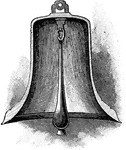
Volcanic Massif of the Mezenc
General view, in part schematic, of the volcanic massif of the Mezenc.
Bassin du Puy
General view, in part schematic, of the "Bassin du Puy" and the "Chaine du Velay" or "Chaine du Deves,"…
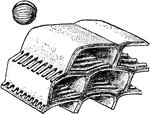
Schwagerina Verbecki
A typical foraminiferal shell shaped more or less like a football in form (diagrammatical view).

Pike Cranium
"Cartilaginous Cranium of the Pike (Esox lucius), with its intrinsic ossifications. A, top view; 3,…
Pike Cranium
"Cartilaginous Cranium of the Pike (Esox lucius), with its intrinsic ossifications. B, side view: V,…
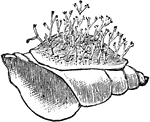
Hydrozoa Encrusting a Small Shell
Hydrozoa (hydrozoans) are a taxonomic class of very small, predatory animals which can be solitary or…

Medusa of a Hydroid
Colonial, plant-like animals closely related to jellyfish, with stinging cells, Any member of the invertebrate…

Thomas Cranmer
Thomas Cranmer (2 July 1489 – 21 March 1556) was a leader of the English Reformation and Archbishop…
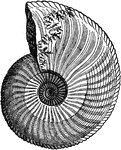
Ammonite
Ammonite, side view. Where the shell has been partly worn away near the aperture, the complex "suture…
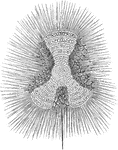
Euchitonia
"A pelagic family of radioflagellate infusorians, typified by the genus Euchitonia. The animalcules…
!["A pipe of this nature fitted with a piece of glass so as to exhibit the reed (which is a "free reed") is shown in [the illustration]. Q is the wind-chest of the bellows, into which P is fitted. In the right-hand figure the upper part of the pope is removed, so as to show the reed more clearly. A plate of metal c c, has a slit but in it, in which the tongue I may just past. By means of a curved wire, r, projecting above the top of the pipe, and the play of the tongue may be controlled and the pipe tuned. The conical pipe, H, placed at the top, serves to increase the power of the sound". -Benson, 1891](https://etc.usf.edu/clipart/62100/62146/62146_reed_mth.gif)
Reed
"A pipe of this nature fitted with a piece of glass so as to exhibit the reed (which is a "free reed")…
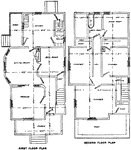
"The Adele" Floor Plans
The blueprints of "The Adele" clearly show the large bay window in the dining area. There is also a…

"The Asbury" Floor Plans
The floor plan of this three story Queen Anne Victorian style house shows the openness of this large…

"The Atlantic" Floor Plans
The floor plan shows more detail on the interior of the house. From this view can be seen the large…
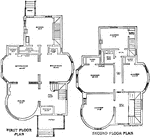
"The Badenoch" Floor Plans
The entrance to this house is labeled a vestibule, to elicit a sense of grandeur. The round tower can…

Steller Sea Lion
The Steller Sea Lion (Eumetopias jubatus) is a large pinniped in the Otariidae family of eared seals.…

Dorsal View of Sea Scorpion
The dorsal view of Eurypterus remipes, an extinct sea scorpion from the Silurian period.
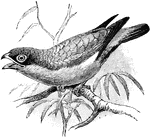
Australian Roller on Branch
The Australian Roller (Eurystomas pacificus) is an Old World bird in the Coraciidae family.

Dorsal View of Ensign Wasp
The dorsal view of the Ensign Wasp (Evania laevigata), an insect in the Evaniidae family.

Dorsal View of Ground Beetle
The dorsal view of the Ground Beetle (Evarthrus orbatus), an insect in the Carabidae family of carabid…
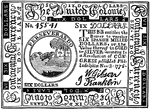
Continental Paper Money
This six dollar bill is an example of Continental paper money of the United colonies issued in 1776.

Irrigation with Check Levees
"Irrigation by means of check levees for orchards on sloping hillsides (sectional view)." -Department…

Irrigation with Terraces
"Irrigation by means of terraces on steep hillsides (sectional view)." -Department of Agriculture
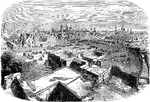
Mexican City of Vera Cruz in 1847
Aerial view of Vera Cruz, Mexico in 1847 showing buildings and the mountainous horizon.
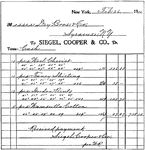
Receipted Bill for Dry Goods
A company's bill for dry goods with a breakdown of costs and a note of receipt at the bottom.

Oyster Shell
An illustration of a oyster shell. The common name oyster is used for a number of different groups of…
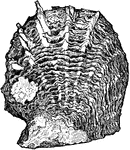
Oyster Shell
An illustration of a oyster shell. The common name oyster is used for a number of different groups of…
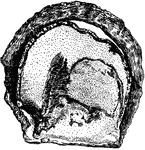
Oyster Shell
An illustration of a oyster shell. The common name oyster is used for a number of different groups of…
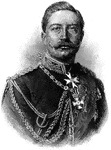
German Emperor Wilhelm II
Wilhelm II (27 January 1859 – 4 June 1941) was the last German Emperor and King of Prussia (German:…

Promissory Note
"A promissory note, or a note, is a written promise on the part of one person to pay another certain…

Sight Draft
"A sight draft is one drawn payable "at sight"; that is, when it is presented to the drawee for payment."…

Bank Draft
"A bank draft is an order written by one bank directing another bank to pay a specified sum of money…

Personal Check
"A check is an order on a bank by a depositor for the payment of money; except that it is drawn by a…
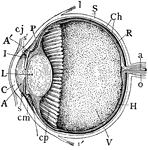
Median Vertical Anteroposterior Section of Eye
"Human Eye, in Median Vertical Anteroposterior Section. (Ciliary processes shown, through not all lying…

Obverse and Reverse Sides of Fanam of Madras
The obverse and reverse sides of the fanam, a small silver coin used in Madras, India.

Obverse and Reverse Sides of Farthing of Charles II
The obverse and reverse sides of the farthing depicting Charles II. The farthing was an English coin…
Anterior View of Human Right Femur
"Anterior View of Human Right Femur. ec, external condyle; etu, external tuberosity; ic, internal condyle;…

Posterior View of Left Femur of Horse
"Posterior View of Left Femur of a Horse. h, head; gtr, great trochanter; ttr, third trochanter; ltr,…

Feloher from Nineveh
"One of an order of beings, the life-principles or geniuses or tutelary spirits of living beings, believed…

Piers Gaveston
Piers Gaveston, 1st Earl of Cornwall (c. 1284 – 19 June 1312) was the favorite, and possibly lover,…

Samuel Pepys
Samuel Pepys, FRS (23 February 1633 – 26 May 1703) was an English naval administrator and Member…
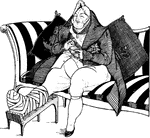
George IV
George IV or George Augustus Frederick (12 August 1762 – 26 June 1830) was king of the United…

George Bryan Brummell
Beau Brummell, né George Bryan Brummell (7 June 1778, London, England – 30 March 1840,…
Terminal Moraines
Bird's eye view of about 2 square miles of terminal moraine. Lakes shown by horizontal shading; swamps…

Obverse and Reverse Sides of Gold Florin
"The English name of a gold coin weighing about 55 grains, first issued at Florence in 1252, and having…
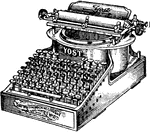
Typewriter
A typewriter is a mechanical or electromechanical device with a set of "keys" that, when pressed, cause…

Open Typewriter
A typewriter is a mechanical or electromechanical device with a set of "keys" that, when pressed, cause…
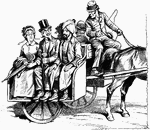
Jaunting Car
An illustration of a jaunting car; The Irish form of the sprung cart, called a jaunting car or jaunty…

European Pied Flycatcher
The European Pied Flycatcher (Ficedula hypoleuca) is a small passerine bird in the Muscicapidae family…

First Cycle of Erosion
A coastal plain in the first cycle of erosion. The presence of two hard layers produces a terraced cuesta…

Hog-back Diagram
Hog-backs (RR) changing into cuestas (CC) and these into steps (HH) by progressive flattening of strata;…

Cliffs of Normandy
Work of the waves in cutting away rocky coasts. Cliffs of Normandy; the coast has been cut back so far…
